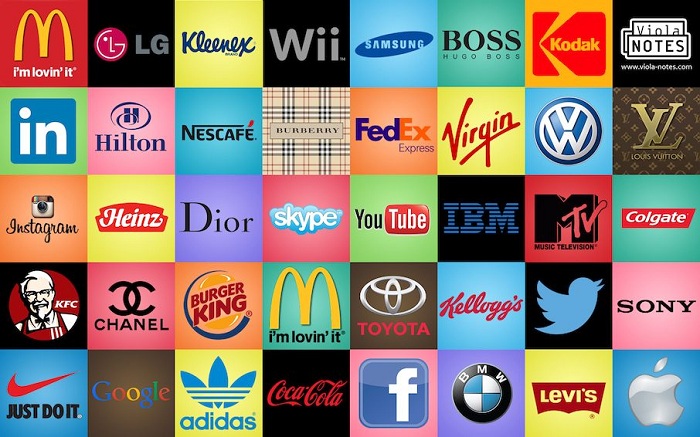But despite selling in their billions in countries across the globe, little is often known about the products, foods, and beverages that have become a part of our everyday lives - and the people who toiled away creating them.
Now a fascinating new book has delved into the origins of famous brands, exploring the stories behind their names and founders.
Famous Brands and Their Origins looks at, among others, Michael Marks - a Jewish immigrant who fled persecution to arrive in Leeds where he met Tom Spencer - signalling the birth of M&S.
The cult beauty product Vaseline is sold every thirty-nine seconds somewhere in the world - but was devised by a British-born chemist who traveled the length and breadth of America by horse and cart to market his product.
Other stories include Quality Street - the world’s number one selling boxed chocolate assortment, IRN-BRU and its top-secret recipe, Nescafé, which came as a consequence of the 1929 Wall Street Crash, and the Caesar salad - put together with scraps of leftovers in a Mexican restaurant.

Barbie’s creator was Ruth Handler who, with her husband Elliot, had founded Mattel Creations in 1945. In 2006 a collection of over 4,000 Barbie dolls dating from 1959 to 2002 raised £111,000 when they went under the hammer at Christie’s
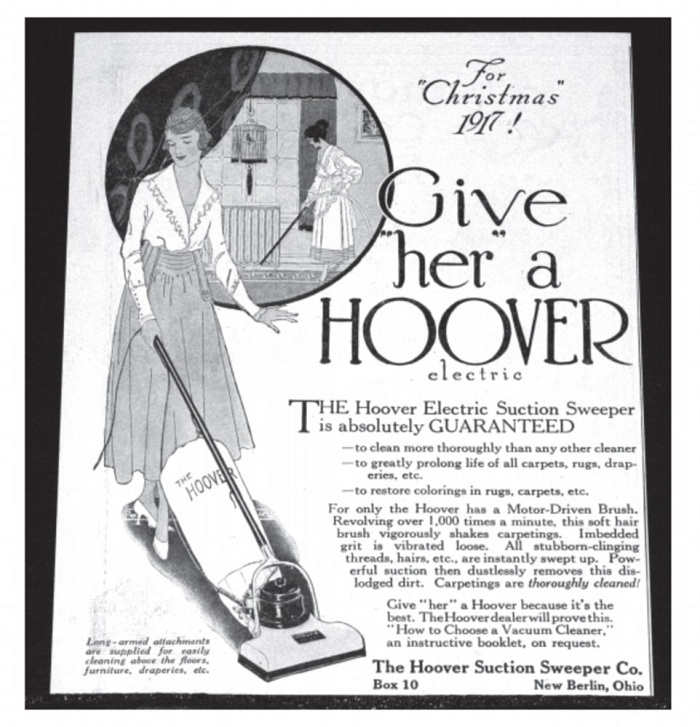
The Hoover brand was created in 1907 by James M. Spangler, an asthmatic janitor from Ohio who invented a device he called a suction sweeper to help minimise his exposure to dust. He later sold the patent to his cousin’s husband, Henry Hoover
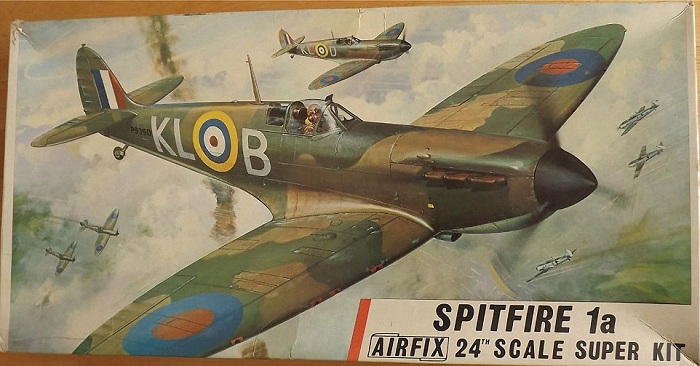
Airfix – built for success since 1939: The man behind the brand was born Miklos Koves, a Hungarian Jew who spent sixteen years moving from one country to another to avoid political and religious persecution

Then and now: Kit Kat – chocolate break of choice since 1935 Kit Kat first appeared on the market in 1935; within two years it had become Rowntree’s bestselling product, a position it retains to this day
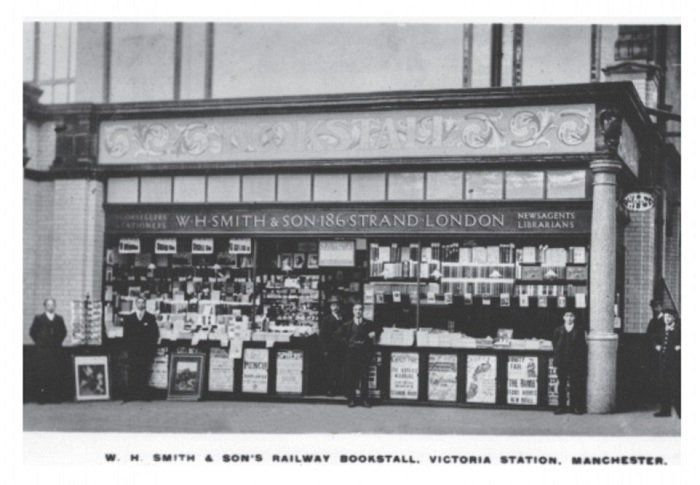
W H Smith: In 1784 46-year-old Henry Walton Smith married 28-year-old Anna Eastaugh. Smith`s family cut off his allowance because of the couple`s class disparity forcing him to seek an alternative means of support - so the shop was born
Quality Street: Magic moments
Sweetening Christmas since 1936, Quality Street is the world’s number one selling boxed chocolate assortment. Around 6,000 individual sweets are produced every minute - or 67 million per week.
Yet without the efforts of a hardworking couple from Halifax in the 1890s, Yuletides would be bereft of green noisette triangles, golden toffee pennies, and ‘the purple one’.
In 1890, shopkeepers John and Violet Mackintosh hit upon a way to combine traditional English toffee with soft, gloopy American caramel.
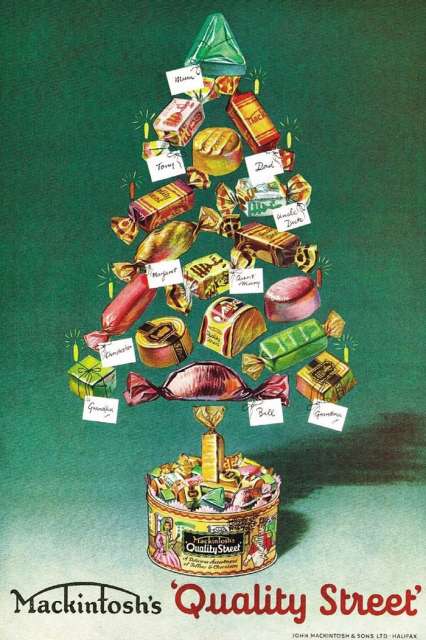
Quality Street: The brainchild of shopkeepers John and Violet Mackintosh in 1890
After a few years their recipe had become so popular that they closed their shop and opened a toffee factory.
By the 1930s, John Mackintosh & Sons Ltd was a thriving confectionery business with more than 1,000 employees in Halifax, and a second factory in Norwich. Yet the difficult economic conditions of the era meant that ordinary people had less disposable income for luxuries like boxes of chocolates.
Realizing this, in 1936 Mackintosh decided to create a range of toffees and sweets which would be coated in chocolate, making them more affordable than confectionery with a higher chocolate content.
When John died his son, Harold inherited the business, named Mackintosh`s, and in 1936 he invented Quality Street, a name inspired by the J. M. Barrie play `Quality Sweet`.
The businessman was revolutionary, wrapping sweets individually in coloured paper and in a decorative tin for the first time. He also introduced new technology in the world`s first twist-wrapping machine.
Coca-Cola: Accept no substitute
Coca-Cola originated as a soda fountain beverage in 1886, selling just nine glasses a day at five cents a glass.
But the drink has come a very long way from its humble origins in nineteenth-century Atlanta. Now, more than 1.9 billion Coca-Colas are enjoyed in more than 200 countries each day.
Back in 1886, an Atlanta-based pharmacist called John Stith Pemberton was experimenting with different ingredients including sugar and a variety of spices when he created a liquid that he thought had potential.
Taking his syrupy mixture to the nearby Jacob’s Pharmacy, he watched as it was combined with carbonated water to form a unique drink.
By 1891 businessman Asa Candler acquired the rights to the brand and used innovative techniques such as complimentary coupons and assertive branding to promote his product.
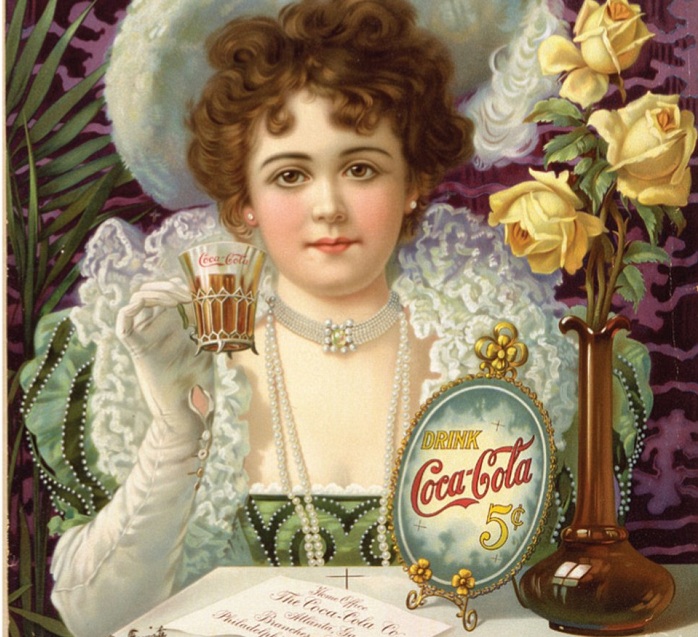
Coca-Cola originated as a soda fountain beverage in 1886, selling just nine glasses a day at five cents a glass
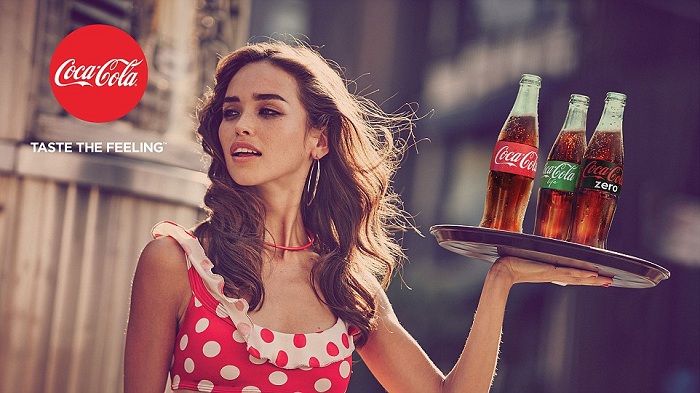
`Taste the feeling`: The brand - and the advertising - has come a long way. Now, more than 1.9 billion Coca-Colas are enjoyed in more than 200 countries each day
By 1895 there were factories producing Coca-Cola syrup in Chicago, Dallas and Los Angeles. It arrived in the UK in 1900, brought by Asa Candler’s son Charles on a visit to England.
When competitors began to produce copycat brands, Coca-Cola responded by urging their customers to ‘Demand the genuine’ and ‘Accept no substitute’.
To further distinguish itself from the copycat brands, from 1916 Coca-Cola was issued in the iconic contour bottle shape.
Although the drink had already spread to a number of countries by the start of the Second World War, many people enjoyed their first taste of Coca-Cola during the conflict via the US soldiers serving in their countries.
IRN-BRU: Scotland`s other national drink
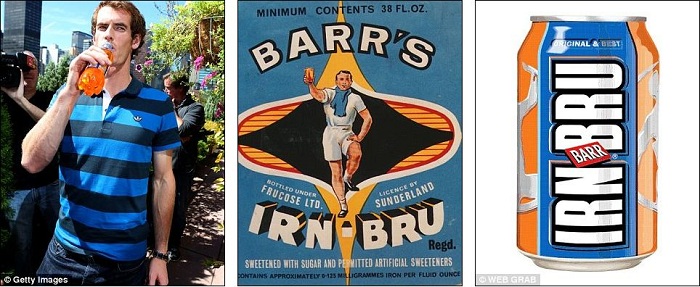
A favourite of Andy Murray (left): Launched in 1901 by A G Barr, IRN-BRU contains thirty-two different flavours, but the precise recipe is a closely-guarded secret which is passed down through the Barr family
Scotland’s favourite non-alcoholic beverage is that rarest of entities, a brand still in the hands of the family firm responsible for its creation. Launched in 1901 by A G Barr, a second generation soft drinks manufacturer, IRN-BRU was known initially as Strachan Brew before changing to Iron Brew.
While it is known that IRN-BRU contains thirty-two different flavours, the precise recipe is a closely-guarded secret which is passed down through the Barr family. At present, three people are privy to the secret; two of them are members of the Barr family while the identity of the third is confidential.
Today, sales of IRN-BRU in Scotland are more or less equal to those of Coca-Cola.
The brand is the third bestselling nonalcoholic beverage across the UK. It also has a strong following in parts of Europe, Africa and Asia, and is produced under licence in Canada, the USA and Norway as well as in Russia where it is manufactured by the Moscow Brewing Company.
In Scotland, the IRN-BRU plant in Cumbernauld has the capacity to produce 690 million cans annually.
Marks & Spencer: Reliable innovation since 1884
In the early 1880’s, Jewish immigrant Michael Marks arrived in Leeds, having escaped persecution in Belarus.
Speaking little English and without much money to his name, he earned his living as a pedlar but by 1884 was trading from an open stall on Leed’s Kirkgate market, thanks to a loan from a wholesaler and a catchy slogan of ‘Don`t ask the price, it’s a penny!’
In 1894, Michael partnered with the wholesalers cashier, Tom Spencer - creating the new organisation Marks and Spencer. During WW2 eating out became popular as rationing was not enforced at restaurants and subsequently by 1942, M&S had opened 82 cafe bars in various stores.
During WW2 100 M&S stores were bombed and 16 destroyed completely. Staff did their bit for the war effort by fire-watching, fundraising for a Spitfire and setting up soup kitchens.
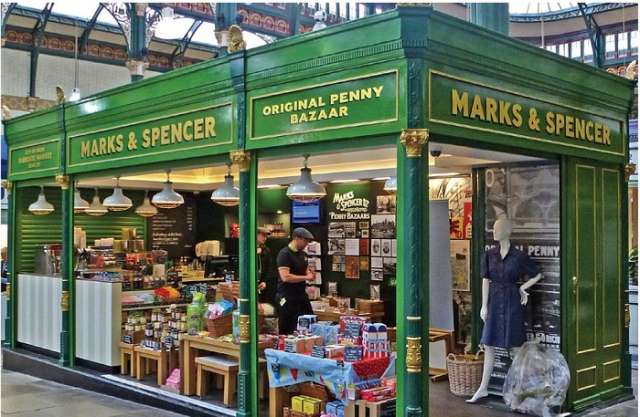
Marks & Spencer original penny bazaar, a mockup in the Kirkgate Markets, Leeds, West Yorkshire
Nescafé: Coffee on demand since 1938
Nescafé came into existence as a consequence of the 1929 Wall Street Crash. Coffee prices collapsed in the ensuing economic chaos, leaving vast quantities sitting unsold in a Brazilian warehouse.
That was when Nestlé, the Swiss food company founded in 1867, was asked to find a way to transform the raw product into some kind of instantly soluble coffee whilst retaining its fresh aroma. After a great deal of research and several false starts, a soluble coffee product called Nescafé made its debut in Switzerland in April 1938.

Nescafé came into existence as a consequence of the 1929 Wall Street Crash
Two months later it was introduced to the UK and the following year it arrived in the US where it proved immensely popular because of its long shelf life. The series of television commercials starring Anthony Head and Sharon Maughan first broadcast in the 1980s became immensely popular.
Viewers became so absorbed by the couple’s tentative romance that tabloid headlines were made when they finally exchanged a kiss after six years of indecisiveness.
Smirnoff Vodka: Premium purity since 1864
In the nineteenth century Pyotr Smirnov devised a recipe for the purest possible vodka. Smirnov’s story is one of remarkable contrasts. Born into serfdom in an agricultural community around 200 miles from Russia, when he died in 1898 he was said to be one of the richest men in the country.
It was the freeing of the serfs by Tsar Alexander II in 1861 that enabled Smirnov to begin his ascent but he achieved his extraordinary success through his own talent and drive. In 1864 when he started to distil vodka he dreamed of creating a product of such purity that it would be endorsed by the Tsar himself.
Having come up with a special recipe and purification system, he promoted his product by paying Moscow’s beggars to ask for his particular vodka brand at the drinking establishments they frequented. The strategy worked and within less than a decade his sales were bringing in an annual revenue of 600,000 roubles.
His life’s ambition was achieved in 1886 when he became the Tsar’s official vodka supplier. Smirnov’s son Vladimir ran the company following his father’s death.
When the Bolsheviks came to power he fled to France and re-established the business. Now called Smirnoff, the French version of Smirnov, the vodka became a bestseller across Europe and the USA.
Owned today by Diageo and made in a number of countries including the UK, Smirnoff is the world’s bestselling premium distilled spirit.
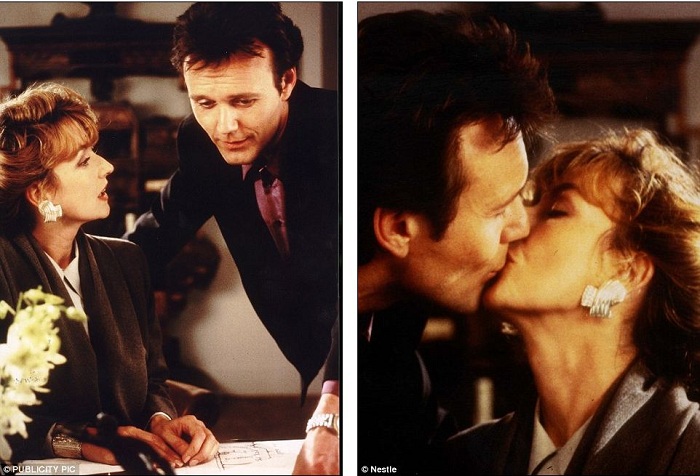
Nescafé: The series of television commercials starring Anthony Head and Sharon Maughan first broadcast in the 1980s became immensely popular
Waitrose: Classy groceries since 1904
In 1904 three ambitious young men – Wallace Waite, Arthur Rose and David Taylor – joined forces to open a high class grocery shop at 263, Acton High Street.
From the very first their philosophy was to offer customers a large and varied selection of the finest-quality foodstuffs. Taylor quit the business in 1906. In 1908 the shop underwent a change of name; Waite and Rose merged to form Waitrose.
During the First World War, Rose enlisted while Waite remained at home. After the Armistice, Rose suffered from poor health as a result of wartime injuries so left the business in 1924. Waite continued to open new shops in affluent areas.
By 1937 he was thinking about retirement but wanted to make sure his chain of shops was left in safe hands. His solution was to sell the ten Waitrose shops to the John Lewis Partnership on 1 October of that year, staying on to oversee the transition. He retired in 1940, having been awarded an MBE for promoting British and Empire produce, and lived until 1971.
Their first supermarket was opened in Streatham in 1955 with 2,500 square feet of selling space. As more followed, a new distribution centre was opened at Bracknell in Berkshire to enable the business to cope with the increased demand.
Today there are in excess of 300 Waitrose stores across the country. Not bad going for a little grocery shop from Acton.
Cadbury’s Dairy Milk: Milky magic since 1905
The Cadbury manufacturing story began in 1831 when Birmingham shopkeeper John Cadbury started to produce cocoa and drinking chocolate. In 1861 John’s sons, George and Richard, took over the business, using an inheritance from their mother to finance the enterprise during a problematic period.
Their commitment was rewarded when, in 1866, an expensive new piece of machinery enabled them to create the UK’s first unadulterated cocoa powder, Cadbury’s Cocoa Essence.
In 1875 Cadbury created their first Easter eggs but it wasn’t until 1897 that they ventured into the production of milk chocolate. Rather coarse and dry, their initial product was inferior to the Swiss chocolate that was dominating the market.

The Cadbury manufacturing story began in 1831 when Birmingham shopkeeper John Cadbury started to produce cocoa and drinking chocolate
Keen to improve, in 1905 Cadbury launched Dairy Milk, a milk chocolate bar with a uniquely high content of milk. The first packaging was pale mauve with red script but in 1920 it was replaced by the purple we are familiar with today.
The public showed their appreciation for the new chocolate brand by making it the UK’s bestseller by the start of the 1920s. Introduced in 1928, the famous ‘glass and a half full of milk’ symbol is still in use today.
The brand is now owned by American company Mondelēz.
Mars: Helping us work, rest and play since 1932
Every day, three million Mars bars are produced at the Mars factory in Slough, a fact that encourages many to regard it as the undisputed king of all chocolate bars.
A layered creation of sticky caramel and soft nougat surrounded by milk chocolate, it was the first product created by Forrest Mars when he came to England in 1932 and opened a small confectionery outfit in Slough.
Legend has it that with limited funds at his disposal, Forrest and his team of between four and twelve employees perfected his recipe in a small kitchen stocked with second-hand equipment.
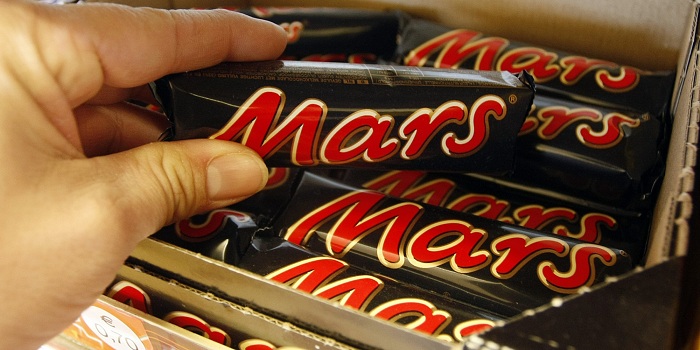
Every day, three million Mars bars are produced at the Mars factory in Slough, a fact that encourages many to regard it as the undisputed king of all chocolate bars
Although not identical, the formula was closely based on his father Frank Mars’ Milky Way which was already an established brand in America. When the Mars bar went into production in August 1932 it was coated in chocolate obtained from Cadbury since the fledgling Slough site was some way off being ready to produce its own chocolate.
During the Second World War Mars bars were given to British troops and sent to prisoners of war in Germany. In 1959, the famous ‘A Mars a day helps you work, rest and play’ slogan was used for the first time.
A variation of the same phrase is still used today. In recent years Mars has become an official supporter of the England football team and an official sponsor of the Scotland team. In 1955 Petula Clark and the late Bob Monkhouse appeared in the first Mars bar TV commercial.
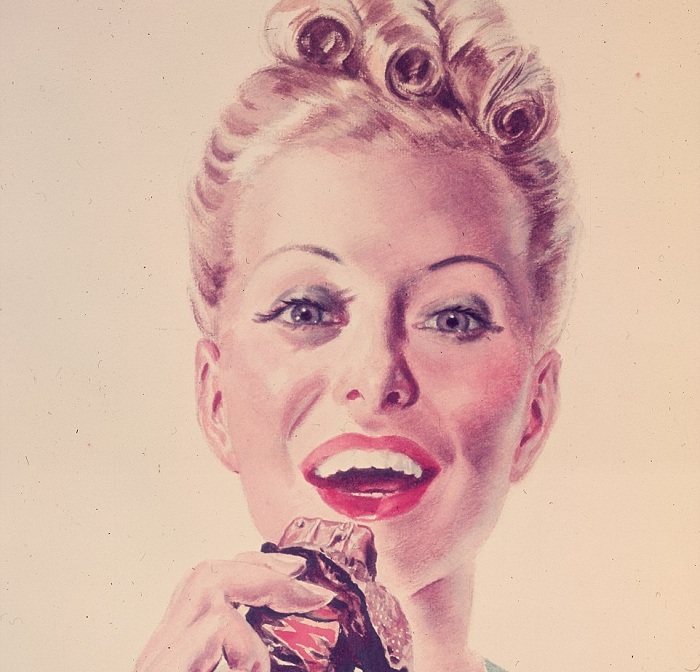
Legend has it that with limited funds at his disposal, Forrest and his team of between four and twelve employees perfected his recipe in a small kitchen stocked with second-hand equipment
Did you know?: Mr Kipling was not a real person

Mr Kipling, maker of ‘exceedingly good cakes’, was not a real person.
Launched in 1967 by Rank Hovis McDougall, the Mr Kipling brand name was intended to lend a cosy aura to cakes turned out on a production line.
It was a highly successful strategy because Mr Kipling has been the UK’s leading cake brand since 1976.
Sara Lee: Our just desserts since 1949
Charles Lubin epitomised the American Dream, rising from humble beginnings to found a global frozen foods business. His journey began in 1918 when, as a lad of 14, he was apprenticed to a Chicago baker.
By 1935 he had gone into business with his brother-in-law, buying three neighbourhood bakeries called Community Bake Shops. As the venture prospered a further four shops were added to the chain but in 1949 Lubin and his brother-in-law went their separate ways.
Now working alone, Lubin developed new products, the first of which was a cream cheesecake. Discussing possible names for the new confection, his wife jokingly suggested naming it after Sara Lee, their young daughter. Lubin’s cakes were sold fresh until 1952 when a visitor asked Lubin to ship products to Texas. He reformulated his recipes without compromising on quality, and by 1955 was delivering them to forty-eight US states.
Such was his success that just one year later Lubin was able to sell his business to Consolidated Foods for $2.8 million, at that time an enormous sum of money. Nevertheless, Lubin stayed on as Chief Executive Officer. He died in 1988. His enterprise has gone on to become a global baked goods brand.

Charles Lubin epitomised the American Dream, rising from humble beginnings to found a global frozen foods business
Caesar salad
Caesar salad was invented by restaurateur Caesar Cardini in Tijuana, Mexico in 1924. It was the Fourth of July and business had been so brisk that the restaurant was running out of food.
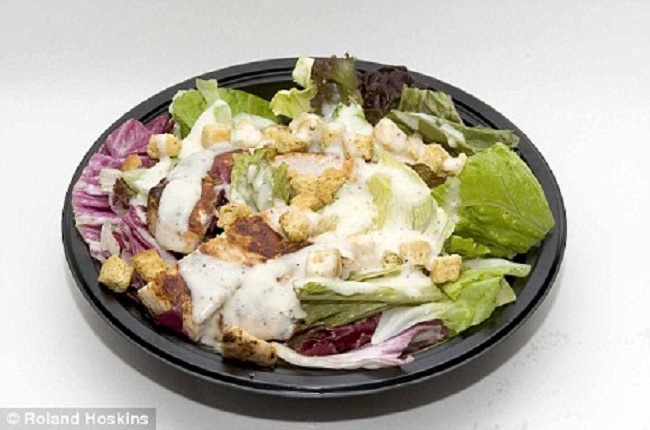
Caesar salad was invented by restaurateur Caesar Cardini in Tijuana, Mexico in 1924
Unwilling to turn away hungry customers, Cardini had a rummage in his kitchen and put together a salad from his few remaining supplies: romaine lettuce, garlic, croutons, Parmesan, hardboiled eggs, olive oil and Worcestershire sauce.
With a natural showman’s instinct, he prepared the salad at the table so the guests could watch the humble ingredients transform into something rather special. Proud of the dish he had created in less than ideal circumstances, Cardini decided to give it his first name, Caesar.
Singer sewing machines
Isaac Merritt Singer, the man behind the world’s most famous sewing machine brand, was a colourful character noted almost as much for his rackety lifestyle as for his exceptional business achievements. The eighth child of impoverished German immigrants, he was born in Schaghiticoke, New York, but left home at the age of twelve.
For many years he had an eclectic career, working when he could as an actor. A dedicated ladies’ man, he became entangled with a succession of women, some of whom he married. Along the way he fathered at least twenty-four children, not always in wedlock.
During a spell in Boston in 1850 he lodged with a man who sold and repaired a type of sewing machine that had an unfortunate tendency to break down. After studying one of these machines, Singer decided that he could improve on its design.
Some 95 days later he had come up with the world’s first practical sewing machine, which he patented in 1851 before forming I.M. Singer & Company.
Singer fled to Europe in the 1860s to escape his increasingly complicated domestic arrangements. In Paris he met and subsequently married another woman, the beautiful Isabelle Boyer who bore him yet more children. In 1871 he relocated to England, making his new home in Devon where he died in 1875. He is buried in Torquay Cemetery.

Isaac Merritt Singer, the man behind the world’s most famous sewing machine brand, was a colourful character noted almost as much for his rackety lifestyle as for his exceptional business achievements
Vaseline: First aid in a jar since 1872
It was recently estimated that a jar of Vaseline is sold every thirty-nine seconds somewhere in the world - pretty good going for a product whose origins lie in a sticky substance found on the drill rods of a Pennsylvania oil rig.
The rise from gloopy petroleum by-product to global bathroom cabinet staple came about thanks to the observational powers of Robert Chesebrough, a young, British-born chemist making a way for himself in nineteenth century America.
Whilst visiting a Pennsylvania oil town on a fact-finding mission, 22-year-old Chesebrough noticed the rig workers’ habit of slathering the matter they called rod wax onto burns and other injuries to speed up the healing process.

It was recently estimated that a jar of Vaseline is sold every thirty-nine seconds somewhere in the world
In 1865 he was able to patent a process for making a clear, pure product which he dubbed petroleum jelly.
Travelling by horse and cart, he demonstrated the product to communities throughout New York State, and in 1872 Chesebrough registered his petroleum jelly as Vaseline, a name arrived at by combining wasser – the German word for water – with élaion, the Greek word for oil.
His hard work paid off and in 1874, 1,400 jars of Vaseline were being sold daily across the USA. Commander Robert Peary used the product to protect his skin when he made his attempt on the North Pole in 1909.
Robert Chesebrough was knighted by Queen Victoria in 1883; he died in 1933 at the age of 96.
Boots the Chemist: Dispensing good health since 1849
There are approximately 2,500 branches of Boots in the UK, meaning 90 per cent of the population is within a ten-minute drive of one of their shops. John Boot opened his small herbal remedies business in Nottingham in 1849, scraping together enough money to open a shop.

John Boot opened his small herbal remedies business in Nottingham in 1849, scraping together enough money to open a shop
There he and his wife Mary sold their home-prepared remedies to customers unable to afford the services of a qualified doctor. After her husband`s death in 1860, Mary ran the business with Jesse, her ten-year-old son, helping wherever possible.
In 1877 Jesse had assumed full control, selling proprietary brands, buying them in bulk to obtain good discounts and then selling on at prices the working classes could afford. In 1884 two new milestones were reached: the first shops outside Nottingham were opened (in Lincoln and Sheffield) and a qualified pharmacist was employed to work within a Boots store.
By 1914 there were 550 Boots shops nationwide, selling everything from pharmaceutical products and cosmetics to stationery and fancy goods.
HMV: Music to our ears since 1921
The origins of the HMV brand lie in the Gramophone Company which used a painting entitled His Master’s Voice by Francis Barraud to advertise their products.
In the original painting a terrier called Nipper listens intently to the sound emanating from the cylinder of a phonograph.
In 1921 it opened its first dedicated shop in London’s Oxford Street. Known as HMV – an acronym for His Master’s Voice – the shop was opened by Sir Edward Elgar.

The origins of the HMV brand lie in the Gramophone Company which used a painting entitled His Master’s Voice by Francis Barraud
It wasn’t until the pop music boom of the Sixties that further shops were opened throughout the London region, spreading out across the country during the Seventies. It was in the Eighties that HMV became a leading national retailer, thanks to the arrival on the music scene of the CD.
A decade later the advent of the DVD had a similar effect; in 1997 there were 100 HMV shops nationwide but following the introduction of DVDs, by 2004 the number had more than doubled.
This growth surge came to an abrupt halt when online shopping began to hit sales. Despite various attempts to reverse the trend, HMV Group plc went into administration in 2013, reappearing under new ownership within a couple of months.
Today HMV Retail Ltd has around 120 shops within the UK, a further 110 in Canada and in excess of 40 across Ireland.
Harrods: Supplying the affluent since 1849
When the Qatari royal family bought the world-famous Knightsbridge department store from Mohammed Al Fayed in 2010, the asking price was an eye-watering £1.5bn. The one-room grocery business founded in the middle of the nineteenth century by Charles Henry Harrod has certainly come a long way.
Originally an Essex lad, Harrod first set up shop as a tea dealer in London’s Whitechapel district before becoming a tea wholesaler in Eastcheap. In 1849, keen to capitalise on the influx of wealthy residents into Knightsbridge, he opened the aforementioned one-room shop in the Brompton Road.
As the business prospered he took on larger premises and gradually added new lines. His son, Charles Digby Harrod, assumed control of the business in the 1860s and built on his father’s success so that by 1880 Harrods was an elite department store, offering its affluent clientele luxury goods of every kind.
A destructive fire in December 1883 failed to dent the indomitable Harrod spirit. A palatial new store – designed with gaudy aplomb by architect Charles William Stephens – was promptly put under construction.
When Harrod retired in 1889 the store became a public company, a state which lasted until 1985 when it was bought, together with parent company House of Fraser, by Egyptian businessman Mohammed Al Fayed.
F. Hinds: A bling thing since 1856
Although the jewellery chain F. Hinds has officially been trading since 1856, the Hinds family has been associated with the industry since 1825 when Joseph Hinds set up as a clockmaker in Stamford, Lincolnshire.
His son, George Henry, served an apprenticeship with a watchmaker before moving to London where, in 1856, he opened a shop in Paddington before relocating to Edgware Road. As the twentieth century dawned, control of the company passed to George’s son, William Hinds, with his three sons – William, George and Frank – joining the family concern in due course.
During the First World War, George and Frank served in the trenches while their brother William stayed behind to look after the business, taking sole responsibility for it following the death of their father in 1915. One year later George was killed in action on the first day of the Battle of the Somme.
After the war, William and Frank shared the management of the company until 1924 when they agreed to an amicable split.n After the Second World War, during which F. Hinds produced timing devices for bombs, Frank’s sons Eric and Roy joined the family firm, the fifth generation of Hinds to work in the business.
In the 1980s a sixth generation came into the business when Roy’s sons David and Andrew and Eric’s son Neil started work at F. Hinds. Today there are 114 F. Hinds shop throughout England and Wales, making the business the UK’s largest independent jeweller.
The fact that it has remained in the hands of the same family for nearly 160 years makes it something of a rarity in British retail.








